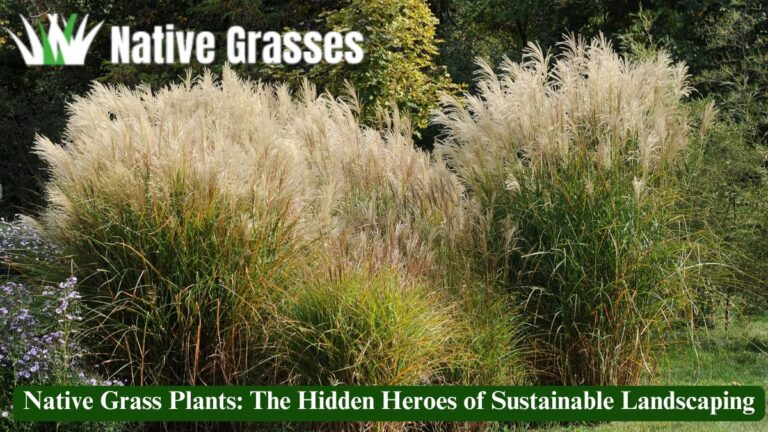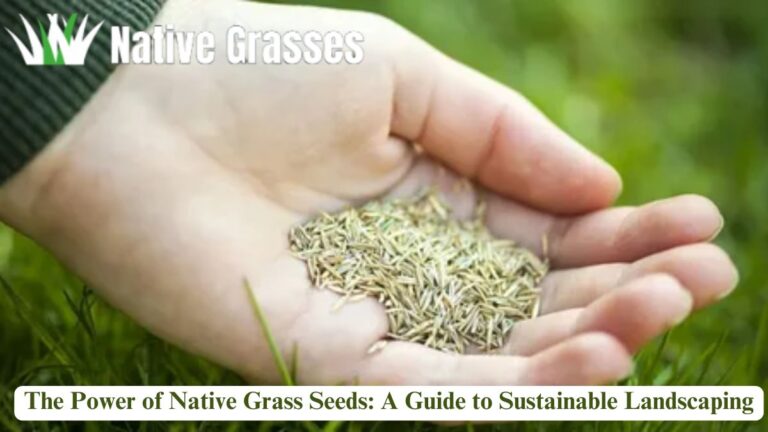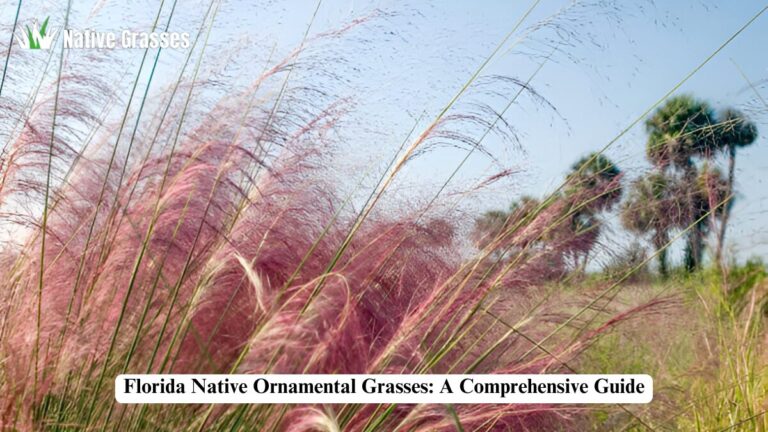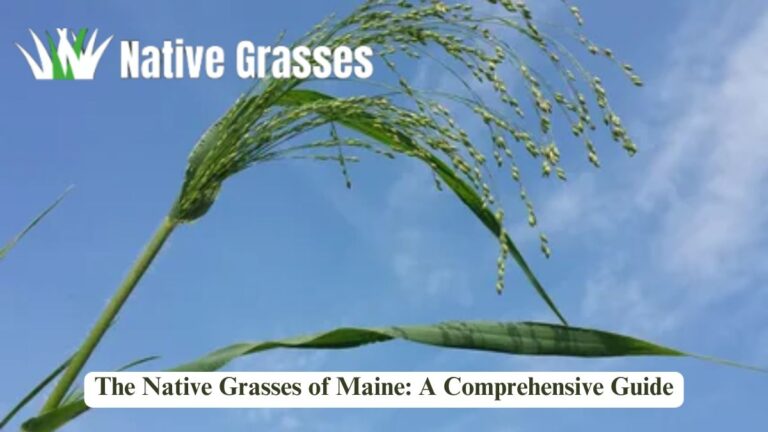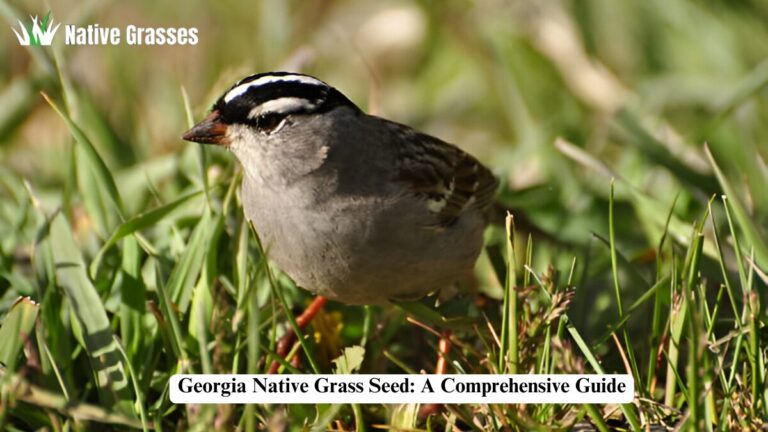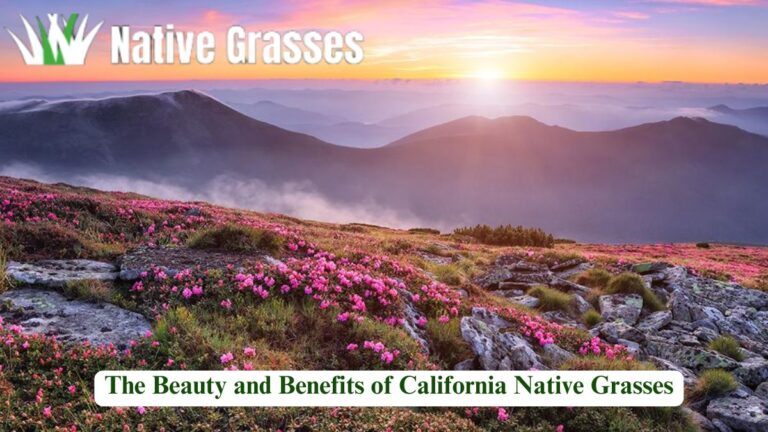Native Grasses of Washington State: A Complete Guide to Their Importance and Conservation

Washington State boasts diverse landscapes, ranging from lush coastal areas to dry plateaus and rugged mountain regions. Amidst this variety lies a treasure trove of native grasses, integral to the state’s ecology, agriculture, and wildlife. In this guide, we’ll explore the native grasses of Washington State, their significance in local ecosystems, and efforts to conserve them.
What Are Native Grasses?
Before diving into Washington’s native grasses, it’s important to understand what “native grasses” are and why they are essential to local environments. Native grasses are species that evolved in a particular region and have adapted to its climate, soil, and wildlife over thousands of years. These grasses provide numerous ecological services, including stabilizing the soil, providing food and habitat for wildlife, and contributing to the overall health of the environment.
Why Native Grasses Matter
- Ecological Balance: Native grasses are crucial for maintaining biodiversity, offering habitat and food for a variety of species.
- Soil Health: These grasses help prevent soil erosion, enhance water retention, and improve soil fertility.
- Wildlife Habitat: Native grasses support a range of wildlife, from pollinators like bees and butterflies to larger herbivores and birds.
In Washington, native grasses play an especially critical role, as they’ve adapted to thrive in the state’s diverse climates, from the moist coastal regions to the dry eastern plains.
The Climate and Geography of Washington State
Washington State is home to a variety of climate zones, which in turn support an array of plant species. Understanding these zones helps us appreciate the different types of native grasses that flourish in Washington.
Climate Zones in Washington
- Coastal Climate: Found along the western edge of the state, this region experiences mild temperatures and heavy rainfall. Grasses here are adapted to moist conditions.
- Mountainous Climate: The Cascade Range separates the coastal region from the dry eastern half of the state. Here, grasses must tolerate cold winters and occasional snowfall.
- Inland (Eastern Washington): This region is much drier and hotter, with grasses adapted to these arid conditions.
The Diversity of Washington’s Ecosystems
- Puget Sound: A mix of temperate rainforests and coastal meadows.
- Columbia Plateau: A vast, arid grassland that supports hardy native grasses.
- Olympic Peninsula: Rich in moisture, supporting lush meadows and diverse plant species.
- Cascades and Rockies: Cooler climates with grasses that thrive at higher altitudes.
Key Native Grass Species of Washington State
Washington’s landscape is home to a wide variety of grasses, each adapted to specific environments. Here are some of the most significant native grass species found across the state:
Deschampsia Cespitosa (Tufted Hairgrass)
- Habitat: Wetlands, meadows, and forest clearings.
- Description: This perennial grass forms dense tufts with long, narrow leaves. It thrives in moist, cool conditions.
- Ecological Role: Tufted hair grass provides excellent erosion control in wetlands and helps maintain soil moisture levels.
Poa Pratensis (Kentucky Bluegrass)
- Habitat: Forest meadows and moist, fertile soils.
- Description: Known for its lush, green blades, this grass is widely used in lawns but is also native to some regions of Washington.
- Ecological Role: Although not unique to Washington, it plays a significant role in stabilizing soil in moist meadows and providing grazing material for livestock.
Festuca Idahoensis (Idaho Fescue)
- Habitat: Dry, rocky slopes and meadows.
- Description: Idaho fescue is a fine-textured, bunchgrass that thrives in Washington’s dry regions, especially in Eastern Washington.
- Ecological Role: This grass is crucial in drought-prone areas, improving soil structure and preventing erosion.
Elymus Elymoides (Squirreltail)
- Habitat: Dry, rocky soils, often found in the Columbia Plateau.
- Description: Squirreltail is a perennial grass with slender, bristly seed heads.
- Ecological Role: It’s vital in arid environments, where it helps to stabilize loose soils and provide habitat for small mammals.
Achnatherum Hymenoides (Indian Ricegrass)
- Habitat: Dry grasslands and sagebrush steppe.
- Description: Indian ricegrass has long, narrow leaves and produces distinctive seed heads. It thrives in Washington’s arid conditions.
- Ecological Role: This grass is a crucial food source for many species, including birds and rodents.
Poa Sandbergii (Sandberg Bluegrass)
- Habitat: Dry, sandy areas of Washington’s eastern regions.
- Description: Sandberg bluegrass is small, with fine leaves and a delicate structure.
- Ecological Role: It grows in areas prone to drought, playing a key role in soil stabilization and offering food for local wildlife.
The Ecological Benefits of Native Grasses in Washington
Native grasses provide a variety of ecological services that help maintain the health and balance of ecosystems. Here are some of the most important benefits:
Biodiversity Support
Native grasses are a crucial part of the food web. Their seeds feed birds, small mammals, and insects, including pollinators. For example, tufted hair grass supports local butterflies, and Indian ricegrass seeds are favored by rodents. This contributes to the overall biodiversity of Washington’s ecosystems.
Soil Stabilization and Erosion Prevention
One of the most important roles native grasses play is in stabilizing the soil. Their root systems hold the soil together, preventing erosion in areas susceptible to heavy rains or wind. Squirreltail and Idaho fescue are especially effective in arid areas, where the soil is more prone to erosion.
Water Conservation
Grasses like tufted hair grass help maintain moisture in the soil, reducing the need for irrigation in farming and pastoral activities. They also improve water infiltration, allowing water to be absorbed into the ground rather than running off.
Carbon Sequestration
Native grasses, especially those in prairie and grassland ecosystems, store significant amounts of carbon in their roots. This makes them important in the fight against climate change, as grasslands help mitigate the effects of rising carbon levels.
How Native Grasses Benefit Washington’s Agriculture
In Washington, native grasses aren’t just important for the environment—they also play a key role in sustainable farming practices.
Supporting Grazing Systems
Native grasses are excellent for pastureland. They require less water and fertilizer than introduced species, making them ideal for sustainable grazing systems. Grass species like Idaho fescue and Kentucky bluegrass are commonly used for forage, providing nutritious food for livestock without placing excessive strain on the environment.
Soil Health and Fertility
By promoting healthy root systems, native grasses contribute to soil fertility. Their ability to improve soil structure, enhance water retention, and provide organic matter is invaluable to organic and regenerative farming practices in Washington.
Challenges to Native Grasses in Washington State
While native grasses play an essential role in Washington’s ecosystems, they face several threats that make conservation efforts critical.
Invasive Species
Invasive grasses, such as cheatgrass and reed canarygrass, are one of the biggest challenges to native grasses in Washington. These non-native species often outcompete native grasses for resources, disrupting local ecosystems. Cheatgrass, for example, is highly flammable and increases the risk of wildfires in dry areas like the Columbia Plateau.
Climate Change
Climate change is altering precipitation patterns, increasing temperatures, and causing more extreme weather events. These changes can put additional stress on native grass species, especially those that are already adapted to specific environments. For example, tufted hair grass, which thrives in moist conditions, may struggle as rainfall patterns shift.
Habitat Loss
As urbanization and agricultural development continue to spread across Washington, native grasslands are being lost to construction, agriculture, and other land uses. This loss of habitat threatens both the grasses themselves and the wildlife that depend on them.
Restoration of Native Grasslands
Efforts are underway in Washington to restore native grasslands, improve conservation practices, and reintroduce native species to areas where they have been lost.
Conservation Projects in Washington
Several organizations and government initiatives are working to restore native grasslands in Washington. These projects include removing invasive species, planting native grasses, and managing land in ways that mimic natural ecosystems. Notable examples include:
- The Columbia Plateau Project: Aiming to restore grassland habitats by focusing on native species like Indian ricegrass and Idaho fescue.
- The Olympic Peninsula Restoration Effort: This initiative works to maintain the region’s meadows by preserving native grasses and reducing the impact of invasive species.
Best Practices for Restoration
Restoring native grasses involves several key steps:
- Eradication of Invasive Species: Removing weeds and invasive grasses that outcompete natives.
- Soil Preparation: Ensuring the soil is suitable for native grass species to grow.
- Replanting Native Species: Carefully selecting the right grasses for the region.
- Ongoing Maintenance: Regular monitoring and management to ensure long-term success.
Success Stories
One notable success is the restoration of grasslands in the Columbia Basin. By focusing on local species like tufted hairgrass and Indian ricegrass, these projects have helped stabilize soils, reduce erosion, and support wildlife populations.
How You Can Help Protect Native Grasses
Everyone can contribute to the preservation of Washington’s native grasses, whether through personal actions or by supporting conservation efforts.
Actions You Can Take
- Plant Native Grasses: Whether in your garden or as part of a larger landscaping project, planting native grasses helps support local ecosystems.
- Support Conservation Efforts: Get involved with local organizations dedicated to protecting and restoring native grasslands.
- Advocate for Policy Change: Support policies that prioritize conservation, protect natural habitats and reduce the spread of invasive species.
Conclusion
Native grasses are an essential part of Washington State’s ecosystems, contributing to biodiversity, soil health, and water conservation. However, they face significant threats from invasive species, climate change, and habitat loss. By understanding their importance and supporting conservation efforts, we can help ensure that these vital grasses continue to thrive for generations to come.
Whether you’re a landowner, gardener, or simply a nature enthusiast, there’s always something you can do to help protect Washington’s native grasses. Next time you walk through a meadow or across a grassy field, take a moment to appreciate the vital role these grasses play in the landscape—both now and in the future.
FAQ,s
What are native grasses of Washington State?
Native grasses are plant species that naturally grow in Washington’s ecosystems without human introduction.
Why are native grasses important for the environment?
They stabilize soil, provide habitat for wildlife, and maintain ecological balance.
How do native grasses contribute to conservation efforts?
They enhance biodiversity, prevent erosion, and support sustainable land management.
Which native grass species are common in Washington State?
Common species include Bluebunch Wheatgrass, Idaho Fescue, and Tufted Hairgrass.
How can I help conserve native grasses in Washington?
Support restoration projects, avoid invasive species, and promote native planting in landscaping.

